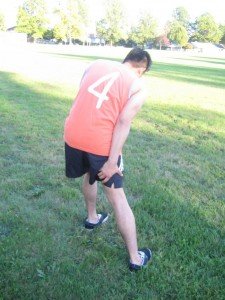Tetanus is a disease that can be prevented with a vaccine that is triggered by the Clostridium tetani bacteria. Unlike with other infections, tetanus is not contagious. Instead, the spores of Clostridium tetani can enter dirty wounds and start to grow into active bacteria. Over time, the Clostridium tetani bacteria starts to generate exotoxins that triggers the symptoms of tetanus infection.
What are the indications?
Children who were not given the vaccine can end up with symptoms in 2 days up to 2 months after sustaining a wound that is contaminated by the tetanus bacteria.
The indicative symptoms include sore muscle spasms that gradually worsen over a week including the following:
- Muscle spasms around the mouth which leads to the typical lockjaw of tetanus

Muscle spasms in the back, neck, legs, arms and abdomen - Muscle spasms around the throat that makes it difficult to swallow
- Spasm of the chest muscles that leads to difficulty breathing
- Muscle spasms in the back, neck, legs, arms and abdomen
Other associated symptoms include headache, fever, irritability, urinary retention, tachycardia, low blood pressure or high blood pressure.
Diagnosing tetanus
Tetanus is typically diagnosed in an individual with sore muscle spasms and a history of dirty wound. It is vital to bear in mind that the child is not only at risk for the condition after a classic case of stepping on a rusted nail. The spores of tetanus thrive in the soil and almost any form of dirty or contaminated wound can lead to the development of tetanus.
Even though puncture wounds commonly result to tetanus, other injuries such as burns, scrapes, dog bites, snake bites and even spider bites can lead to tetanus if the wound is contaminated by feces or dirt.
Management
The treatment usually involves sedation and ventilation along with the following:
- Antibiotics such as tetracycline, penicillin G, erythromycin or metronidazole
- Human tetanus immunoglobulin (TIG) can be utilized to try and neutralize the tetanus toxin
- Muscle relaxants such as magnesium sulfate and diazepam
- Neuromuscular blocking agents such as pancuronium that triggers paralysis
Remember that this condition is a life-threatening condition in which some die from it.
Getting a tetanus shot
It is important to bear in mind that just like other vaccine-preventable conditions, being updated with the immunizations of the child can prevent tetanus. A factor that muddles the condition is that the child might require a shot even if he/she is already up-to-date with his/her injections if it has been 5 or more years since the last shot and has the following:
- Wound that has been contaminated with feces, dirt or saliva
- Puncture wound
- Wound caused by a burn, crush injury or frostbite
- Avulsion wound in which part of the wound is pulled away

